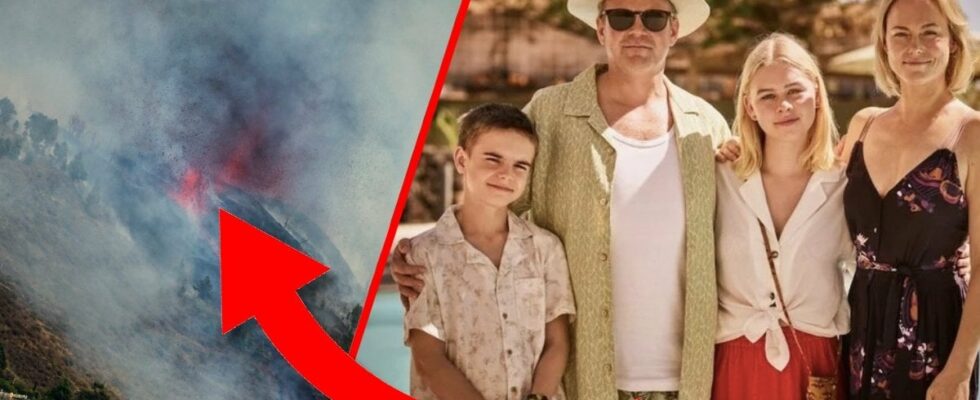What is ‘La Palma’ about on Netflix?
The Norwegian miniseries “La Palma” is about a Norwegian family that goes on vacation to La Palma. The series also follows a young scientist who comes to the conclusion that a volcanic eruption is imminent, and that the disaster could have global consequences.
The family in “La Palma” on Netflix. Photo: Netflix.
READ MORE: Cast list of the Netflix series La Palma: Here are all the actors
Is La Palma a real island?
La Palma exists in reality and is part of the Spanish island group of the Canary Islands. The island is located off the west coast of Africa.
On the island is the area of Cumbre Vieja which is the most active volcanic ridge in the Canary Islands. Several volcanic eruptions have taken place on Cumbre Vieja, the most recent of which occurred in 2021.
The eruption lasted three months and destroyed about 3,000 buildings, buried banana plantations and vineyards, destroyed irrigation systems and roads, according to Forbes. However, no one is said to have been life-threateningly injured or killed in that outbreak.
Pictures from the eruption in 2021. Photo: Daniel Roca/TT. Pictures from the eruption in 2021. Photo: Daniel Roca/TT.
Previously, volcanic eruptions on Cumbre Vieja could be confirmed in 1971 and 1949.
Where was the Netflix series “La Palma” filmed?
The Netflix series “La Palma” was filmed on the island of La Palma, which is a common destination for tourists. Some parts of the series were also filmed in Tenerife.
Is ‘La Palma’ on Netflix based on a true story?
Although La Palma is a real island with the area of Cumbre Vieja, the events of the TV series “La Palma” are fiction, in other words NOT based on a true story.
In the aftermath of the 2021 eruption. Photo: Saul Santos/TT.
READ MORE: All about Thea Sofie Loch Naess: Boyfriend, movies and La Palma
Could the Tsunami in La Palma on Netflix really happen?
In 2001, a theory was published in a study in Geophysical Research Letters where it was claimed that an eruption at Cumbre Vieja could trigger a massive tsunami in the Atlantic. According to the theory, the tsunami would hit parts of the eastern coasts of North America, Europe and West Africa.
However, a majority of scientists who have investigated this believe that this is highly unlikely and a “megatsunami” of this type cannot be expected from any volcanic eruption, something Forbes previously written about.
